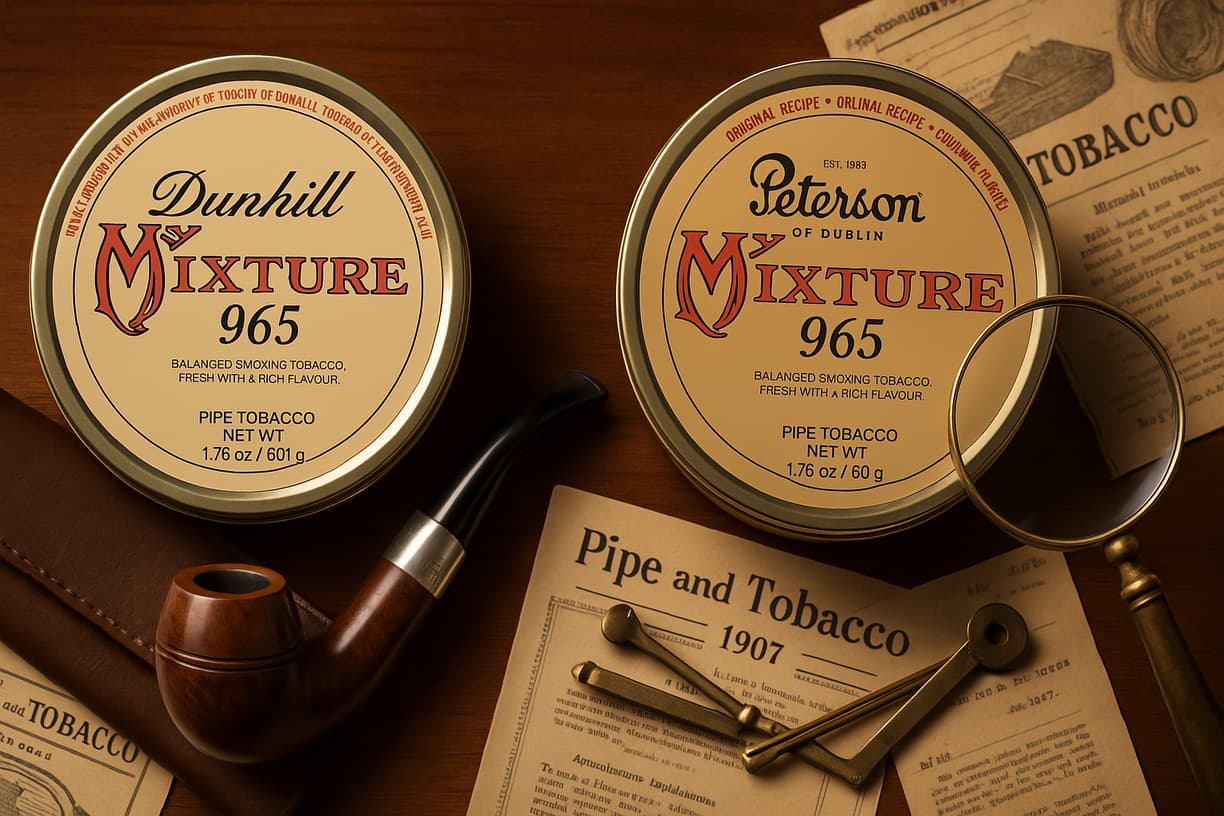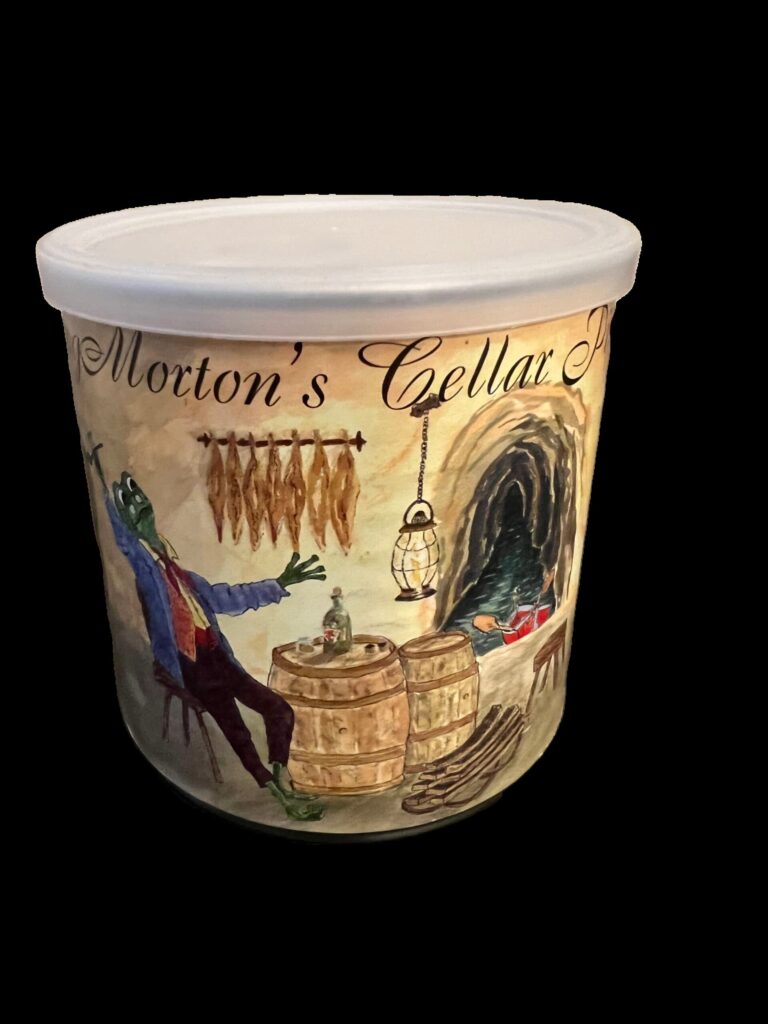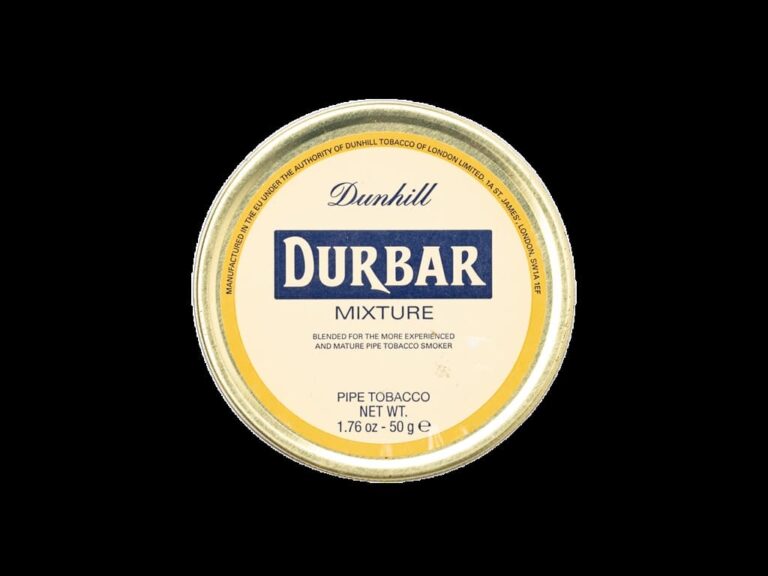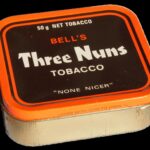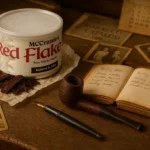“Some tobacco blends disappear with their creators. Others transcend their origins to become something larger than any single manufacturer. My Mixture 965 is the latter—a recipe so perfect that it has survived three different masters, each leaving their subtle mark while preserving the essential character that made it legendary.”
The Immortal Recipe
The tin before me bears the simple, elegant Peterson branding, but the tobacco within carries the genetic memory of over a century of blending excellence. This is Peterson My Mixture 965—formerly Dunhill My Mixture 965—a blend that has survived the closure of legendary tobacco houses, the consolidation of entire industries, and the changing tastes of generations of pipe smokers. It is, quite simply, the most resilient recipe in the history of pipe tobacco.
I have before me not just one tin, but three specimens that tell the complete story of this remarkable blend: a 2003 Murray’s era tin acquired from an estate sale in Yorkshire, a final-production 2017 Dunhill tin from the last days before Peterson took over, and a fresh 2024 Peterson tin representing the current iteration. This isn’t just a review—it’s an archaeological expedition through the layers of tobacco history, each tin a time capsule preserving a different chapter in the 965 story.
The opportunity to compare these three eras side by side is extraordinarily rare. Most tobacco enthusiasts encounter 965 in only one incarnation, missing the subtle evolution that has occurred as the blend passed from master to master. But for those with the patience to seek out vintage tins and the palate to detect nuanced differences, 965 offers a masterclass in how great tobacco can adapt while maintaining its essential character.
What makes this comparison particularly fascinating is that 965 represents something unique in tobacco history: a blend that was so perfectly conceived from the beginning that each subsequent manufacturer has sought not to improve it, but to preserve it. The recipe has remained essentially unchanged since it was first blended for “E. A. Baxter, Esq.” sometime before 1910, yet each era has brought its own interpretation to the execution.
The Genesis of Greatness
To understand what makes 965 special, one must first understand its origins. When Alfred Dunhill opened his Duke Street shop in 1907, he wasn’t just selling tobacco—he was pioneering the concept of personalized blending. The “My Mixture” series represented the democratization of bespoke tobacco, allowing customers to have their own custom blends created and numbered for future reference. By the time political correctness ended the practice, legend has it that the “My Mixture” book contained about 37,000 personal blends.
My Mixture 965 was originally created for a customer identified only as “E. A. Baxter, Esq.” The blend proved so exceptional that it transcended its custom origins to become one of Dunhill’s most popular offerings. This wasn’t tobacco designed by committee or focus-grouped for mass appeal—it was tobacco created for one discerning individual who understood exactly what he wanted from his smoking experience.
The blend’s composition reflects the sophisticated palate of its original commissioner. Built on a foundation of carefully selected Virginia tobacco, 965 incorporates Macedonian Oriental leaf for sweetness and complexity, Cyprian Latakia for its distinctive smoky character, and—most importantly—brown Cavendish for the creamy smoothness that sets it apart from other English blends. This combination creates what tobacco enthusiasts call a “Scottish” blend, distinguished by the inclusion of unflavored Cavendish that rounds out the sharper edges of the Latakia and Orientals.
What made 965 legendary wasn’t just its composition, but its balance. The blend achieves something that many English mixtures attempt but few accomplish: it satisfies both the novice seeking an approachable introduction to Latakia and the connoisseur demanding complexity and sophistication. This versatility ensured its survival through changing tastes and market conditions, making it the tobacco equivalent of a classic that never goes out of style.
The blend’s early success established it as one of “The Big Three” Dunhill English blends, alongside Early Morning Pipe and Nightcap. While each had its devoted following, 965 emerged as the most popular, the blend that defined what an English mixture could be when crafted without compromise. Its reputation spread beyond London’s pipe shops to become a global standard for quality English tobacco.
The Dunhill Era: Perfection Established
From its creation until 1981, My Mixture 965 was blended at Dunhill’s London facility, where master blenders maintained the exacting standards that had made the company legendary. This was the golden age of 965, when the blend was crafted with the kind of attention to detail that only a luxury tobacconist could afford to maintain.
The Dunhill era was characterized by several factors that contributed to the blend’s exceptional quality. First, the company had access to the finest tobacco leaf available, sourced from growers who understood that Dunhill’s standards were non-negotiable. The Virginia component came from carefully selected crops, aged to develop the natural sweetness and complexity that would provide the blend’s foundation. The Oriental tobacco was sourced from traditional growing regions where ancient cultivation methods produced leaf of unmatched character.
Perhaps most importantly, the Latakia used in original Dunhill 965 was the genuine article—Syrian Latakia cured over aromatic woods that imparted the distinctive smoky character that made the blend famous. When political upheaval in Syria disrupted traditional Latakia production, Dunhill was among the first to secure alternative sources, but the early tins of 965 contain tobacco that represents the pinnacle of traditional Latakia craftsmanship.
The blending process itself reflected Dunhill’s commitment to excellence. Rather than the mass production techniques that would later characterize the industry, Dunhill blenders worked in smaller batches, allowing for the kind of attention to detail that ensured consistency while preserving the subtle variations that made each tin unique. The tobacco was pressed and aged to allow the various components to marry, creating the seamless integration that distinguished Dunhill blends from their competitors.
The original Dunhill 965 was also notable for its strength and complexity. Reviewers from this era consistently describe it as having more pronounced flavors and greater depth than later iterations. The Latakia was more assertive, the Orientals more complex, and the overall character more robust. This wasn’t tobacco for the faint of heart—it was tobacco for serious smokers who appreciated the full expression of each component.
The packaging of original Dunhill 965 also reflected the company’s attention to detail. The tins were substantial, with tight-fitting lids that preserved the tobacco’s moisture and character. The labels were understated but elegant, conveying quality through restraint rather than flashy graphics. Even the tin note of original Dunhill 965 was distinctive—rich, complex, and immediately recognizable to those familiar with the blend.
The Murray’s Transition: Evolution Under Pressure
In 1981, a seismic shift occurred in the tobacco world when Dunhill transferred production of most of their blends to Murray, Sons & Company in Belfast, Northern Ireland. This transition marked the end of an era and the beginning of what would become the most controversial period in 965’s history. For tobacco enthusiasts, the Murray’s era represents either a faithful continuation of Dunhill’s legacy or a tragic compromise—depending on whom you ask.
Murray’s brought their own distinguished history to the task. Founded in 1810, the company had been producing quality tobacco for over 170 years when they took over Dunhill production. They were best known for Erinmore, their flagship aromatic blend, but they also had extensive experience with English mixtures. The transition wasn’t a hostile takeover but a business decision by Rothmans, which owned both companies, to consolidate production and reduce costs.
However, the move from London to Belfast involved more than just a change of address. Murray’s operated under different regulations than Dunhill, with less restrictive blending laws that allowed for different approaches to tobacco processing. More significantly, Murray’s was oriented toward mass production rather than the artisanal methods that had characterized Dunhill’s approach. The company used younger tobacco and fewer grades in their blends, prioritizing consistency and efficiency over the subtle variations that had made original Dunhill tobacco special.
The 2003 Murray’s era tin I’m examining tells the story of this transition. The packaging maintains the Dunhill branding and basic design elements, but subtle differences reveal the change in production. The tin itself feels slightly different—still substantial, but not quite as hefty as original Dunhill tins. The label design is similar but not identical, with small variations in typography and layout that signal the change in manufacturer.
Opening the Murray’s era tin reveals tobacco that is immediately recognizable as 965, but with noticeable differences from the original. The tin note is pleasant and complex, but somehow less intense than original Dunhill versions. The tobacco itself appears well-processed and properly aged, but lacks some of the visual richness that characterized the original blend. The various components are clearly present, but they seem more homogenized, less distinct in their individual contributions.
The smoking experience of Murray’s era 965 reflects these subtle changes. The blend retains its essential character—the creamy smoothness from the Cavendish, the smoky depth from the Latakia, the sweet complexity from the Orientals—but everything seems slightly muted. It’s as if someone had adjusted the contrast on a photograph, leaving the image recognizable but somehow less vivid. The blend is still excellent, still clearly 965, but it lacks some of the intensity and complexity that made the original legendary.
Tobacco enthusiasts from this era were divided in their assessment of Murray’s 965. Some appreciated the slightly milder character, finding it more approachable than the sometimes assertive original. Others mourned the loss of complexity, arguing that Murray’s had sacrificed the blend’s soul for the sake of consistency. The truth, as is often the case, lies somewhere between these extremes. Murray’s 965 was good tobacco—very good tobacco—but it was different tobacco, reflecting the realities of modern production methods and changing market conditions.
The Peterson Renaissance: Tradition Preserved
When Dunhill announced in 2017 that they would cease tobacco production, the pipe smoking world held its collective breath. Would the legendary blends simply disappear, joining the ranks of discontinued tobaccos that exist only in memory and increasingly expensive vintage tins? Fortunately, Peterson of Dublin stepped forward to acquire the rights to several Dunhill blends, including the crown jewel of the collection: My Mixture 965.
Peterson’s acquisition of the Dunhill blends represented more than just a business transaction—it was a cultural rescue mission. The company understood that they weren’t just buying recipes; they were accepting stewardship of tobacco history. The pressure to get it right was enormous, as any significant changes would be immediately detected by the thousands of 965 devotees around the world.
The transition from Dunhill to Peterson involved careful attention to maintaining the blend’s essential character while adapting to modern production realities. Peterson worked with Scandinavian Tobacco Group (STG), which had been producing the Dunhill blends since Murray’s closure in 2005, to ensure continuity in sourcing and processing. The goal wasn’t to improve 965—it was to preserve it.
The 2024 Peterson tin before me represents the current state of this preservation effort. The packaging has been updated to reflect Peterson branding while maintaining visual continuity with the Dunhill heritage. The tin quality is excellent, with a tight seal and substantial construction that protects the tobacco’s character. The label design is clean and elegant, paying homage to the blend’s history while establishing Peterson’s ownership of its future.
Opening the Peterson tin reveals tobacco that immediately announces its 965 heritage. The tin note is rich and complex, with the distinctive aroma that has made this blend famous for over a century. The tobacco itself appears well-processed and properly aged, with good color variation and texture that suggests careful attention to component selection and blending.
The smoking experience of current Peterson 965 demonstrates the success of the preservation effort. The blend retains all the characteristics that made it legendary: the creamy smoothness from the brown Cavendish, the smoky depth from the Latakia, the sweet complexity from the Oriental tobacco, and the solid foundation provided by quality Virginia leaf. The balance is excellent, with no single component dominating the others.
However, careful comparison with both the original Dunhill and Murray’s era versions reveals subtle differences that reflect the realities of modern tobacco production. The current Peterson version seems slightly milder than either predecessor, with a cleaner, more refined character that some might interpret as less complex. The Latakia, while still prominent, lacks some of the assertive smokiness that characterized earlier versions. The overall effect is of a blend that has been polished and refined, perhaps at the cost of some of its original rough edges.
The Comparative Tasting: Three Eras, One Legacy
To properly compare these three iterations of 965, I’ve conducted a series of side-by-side tastings using identical pipes—Peterson System Standard 307 bent bulldogs—to eliminate variables and focus purely on the tobacco’s character. Each tin was opened fresh for this comparison, and the tobacco was allowed to reach optimal moisture before smoking. The results reveal both the continuity and evolution of this remarkable blend.
The Murray’s era 965 (2003) presents itself with confidence and complexity. The initial light reveals a rich, full-bodied character with pronounced Latakia that immediately announces its English heritage. The brown Cavendish provides the characteristic creaminess that sets 965 apart from other English blends, but it doesn’t dominate—instead, it serves as a foundation that allows the other components to shine. The Oriental tobacco contributes a subtle sweetness and spice that adds depth without overwhelming the blend’s smoky character.
As the bowl progresses, the Murray’s era blend reveals layers of complexity that unfold gradually. The Latakia remains prominent throughout, but it’s supported by increasingly apparent Virginia sweetness and Oriental spice. The brown Cavendish continues to provide smoothness and body, preventing the blend from becoming harsh or one-dimensional. The finish is long and satisfying, with a pleasant aftertaste that lingers without becoming cloying.
The Peterson era 965 (2024) presents a more refined interpretation of the same basic character. The initial light is smooth and approachable, with well-integrated components that blend seamlessly from the first puff. The Latakia is present and pleasant, but it’s less assertive than in the Murray’s version, creating a more balanced overall impression. The brown Cavendish is beautifully integrated, providing creaminess without calling attention to itself.
Throughout the bowl, the Peterson version maintains its refined character, offering complexity without rough edges. The various components remain distinct but harmonious, creating a smoking experience that is both satisfying and sophisticated. The finish is clean and pleasant, with a subtle sweetness that invites another bowl. This is 965 for the modern palate—polished, consistent, and thoroughly enjoyable.
The differences between these two versions are subtle but real. The Murray’s era blend has more character and intensity, with individual components that assert themselves more boldly. It’s tobacco with personality—sometimes challenging, always interesting. The Peterson version is more refined and approachable, with better integration but perhaps less individual character. Both are excellent representations of 965, but they reflect different philosophies of tobacco blending.
What’s remarkable is how much continuity exists between these versions despite the changes in production. The essential character of 965—its creamy smoothness, smoky depth, and complex balance—remains intact across both eras. The differences are matters of degree rather than kind, reflecting evolution rather than revolution. This continuity speaks to the strength of the original recipe and the skill of the blenders who have maintained it through changing times.
The Technical Evolution
Understanding the differences between these eras requires examining the technical changes that have occurred in tobacco production over the past four decades. The tobacco industry has undergone significant consolidation, with smaller, specialized producers being absorbed into larger corporations focused on efficiency and consistency. This consolidation has brought benefits—better quality control, more consistent products, wider distribution—but it has also resulted in some loss of the artisanal character that distinguished earlier productions.
The sourcing of tobacco leaf has also evolved significantly. The Virginia tobacco used in modern 965 is likely sourced from different farms and processed using different methods than the leaf used in earlier versions. Modern agricultural techniques produce more consistent crops, but they may lack some of the character variations that made vintage tobacco interesting. Similarly, the Oriental tobacco market has changed dramatically, with traditional growing regions facing political and economic pressures that have altered both availability and character.
Perhaps most significantly, the Latakia used in modern 965 is almost certainly different from that used in earlier versions. The disruption of traditional Syrian Latakia production has forced manufacturers to rely on Cyprian Latakia, which, while excellent, has a different character profile. Cyprian Latakia tends to be milder and less complex than its Syrian counterpart, which may explain some of the differences observed between vintage and modern versions of 965.
The blending and processing techniques have also evolved. Modern production emphasizes consistency and efficiency, using computer-controlled systems to ensure that each batch meets exact specifications. This approach produces more uniform results but may sacrifice some of the subtle variations that made earlier productions interesting. The aging and pressing processes have also been standardized, potentially reducing the complexity that developed through longer, less controlled aging periods.
These technical changes don’t necessarily represent a decline in quality—they reflect different priorities and market conditions. Modern consumers expect consistency and availability, qualities that require different production approaches than those used in earlier eras. The challenge for manufacturers like Peterson is to balance these modern requirements with respect for the blend’s historical character.
The Cultural Context
The evolution of 965 also reflects broader cultural changes in pipe smoking and tobacco appreciation. The original Dunhill era coincided with the golden age of pipe smoking, when tobacco was a mainstream pleasure enjoyed by millions of men across all social classes. In this context, 965 was just one option among many, competing with dozens of other high-quality English blends for the attention of discriminating smokers.
The Murray’s era coincided with the beginning of tobacco’s cultural decline, as health concerns and changing social attitudes began to reduce the number of pipe smokers. This period saw the consolidation of the tobacco industry and the beginning of the focus on efficiency over artisanal quality. Murray’s 965 served a smaller but still substantial market of dedicated pipe smokers who valued tradition and quality.
The Peterson era represents tobacco’s current status as a niche pleasure enjoyed by a small but passionate community of enthusiasts. In this context, 965 has achieved almost mythical status as one of the few remaining links to tobacco’s golden age. The pressure on Peterson to maintain the blend’s character is enormous, as any perceived decline would be immediately noticed and criticized by the knowledgeable community of 965 devotees.
This cultural evolution has also changed how 965 is consumed and appreciated. Modern pipe smokers are more likely to be connoisseurs who analyze and compare different tobaccos, rather than casual smokers who simply enjoyed their daily bowl. This heightened scrutiny has both positive and negative effects—it ensures that quality is maintained, but it also creates pressure for perfection that may be impossible to achieve.
The internet has also changed how tobacco knowledge is shared and preserved. Modern smokers have access to detailed reviews, historical information, and comparative analyses that were unavailable to earlier generations. This democratization of knowledge has created a more informed but also more critical consumer base, one that expects transparency and consistency from manufacturers.
The Verdict: Continuity Through Change
After extensive comparison of these three eras of My Mixture 965, my conclusion is both reassuring and nuanced. The essential character of this legendary blend has been preserved through its journey from Dunhill to Murray’s to Peterson. Each era has brought its own interpretation to the execution, but the fundamental recipe and character remain intact. This is still recognizably the same tobacco that was first blended for E. A. Baxter over a century ago.
The Murray’s era represents a middle ground between the original Dunhill intensity and the modern Peterson refinement. It retains much of the complexity and character that made the original famous while adapting to the realities of modern production. For those seeking the closest approximation to original Dunhill 965, Murray’s era tins represent the best available option, though they are becoming increasingly rare and expensive.
The current Peterson version represents a successful preservation effort that prioritizes consistency and approachability over intensity and complexity. It’s excellent tobacco that honors the 965 tradition while serving the needs of modern pipe smokers. While it may lack some of the rough edges and assertive character of earlier versions, it compensates with superior integration and refinement.
The differences between these eras are real but subtle, detectable by experienced palates but unlikely to disappoint casual smokers. Each version offers its own pleasures and rewards, reflecting the skill and priorities of its respective manufacturers. The fact that 965 has survived and thrived through these transitions speaks to the strength of the original recipe and the dedication of the blenders who have maintained it.
For modern pipe smokers, the current Peterson version represents an excellent introduction to English tobacco and a worthy continuation of the 965 tradition. For those seeking historical authenticity, Murray’s era tins offer a glimpse into tobacco’s recent past, while original Dunhill tins provide a connection to the blend’s legendary origins. Each has its place in the 965 story, and each contributes to our understanding of how great tobacco can evolve while maintaining its essential character.
The survival of My Mixture 965 through three different manufacturers represents more than just business continuity—it represents the preservation of tobacco culture itself. In an age when so many legendary blends have disappeared, 965 stands as proof that quality and tradition can survive the pressures of modern commerce. It reminds us that some things are worth preserving, even when preservation requires adaptation and compromise.
This blend has earned its place in tobacco history not just through its quality, but through its resilience. It has survived world wars, industry consolidation, cultural changes, and regulatory pressures to remain one of the most respected and beloved English blends available today. That alone makes it worthy of our attention and appreciation.
Rating: ★★★★★ (5/5 stars)
Availability: Currently Available
Original Manufacturer: Dunhill of London (1907-1981)
Subsequent Manufacturers: Murray, Sons & Company (1981-2005), STG/Orlik (2005-2017)
Current Manufacturer: Peterson of Dublin (2017-present)
Blend Type: English/Scottish Mixture
Primary Components: Virginia, Oriental, Latakia, Brown Cavendish
Strength: Medium to Medium-Full
Character: Creamy, smoky, complex, balanced
Aging Potential: Excellent
Heritage: One of “The Big Three” Dunhill English blends, originally blended for E. A. Baxter, Esq. before 1910
Some tobacco blends are products of their time, forever linked to the era and manufacturer that created them. Others transcend their origins to become something larger—cultural artifacts that carry the accumulated wisdom of generations of blenders and the devotion of countless smokers. My Mixture 965 belongs to this latter category, a blend that has proven that true quality can survive any transition, adapt to any change, and continue to provide pleasure and satisfaction regardless of who makes it or when it was made. In a world of constant change, 965 represents continuity, tradition, and the enduring appeal of tobacco crafted without compromise.

